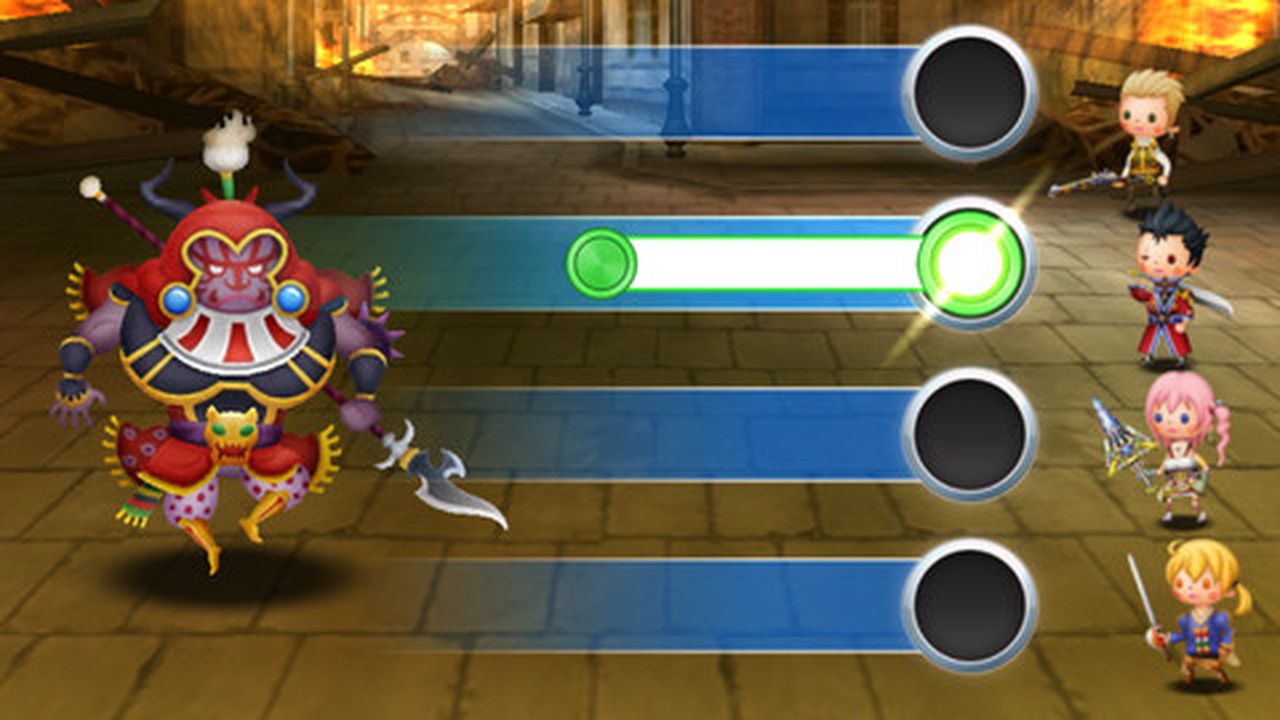

Battle Music Sequences (BMS) feature the chosen party of four characters standing on the right side of the screen in classic Final Fantasy battle fashion, and hitting notes correctly will damage enemies on the other side, rewarding with points and items Field Music Sequences (FMS) have a character strolling over a side-scrolling plain, and hitting notes here will help spur it on to run further and hopefully reach bonus items and finally, Event Music Sequences (EMS) feature cut-scenes from the represented Final Fantasy title playing in the background, but the mark is the object that moves over the notes this time, making the gameplay a little trickier to adjust to. Three types of stages appear in the game, and are exactly the same as the first Theatrhythm Final Fantasy. Landing notes accurately rewards with points, but tapping out of rhythm or missing them entirely will hurt the party's HP, where it is Game Over if it falls to zero.

Red notes require a single tap, green notes need the stylus to be held down until the end of the note, and yellow arrow notes demand a short slide in the direction they are pointing. There is still the issue of certain tracks stopping earlier and starting a bit later than they should, but the biggest gripes have definitely been looked at and acted upon.Īs with the first title, different coloured notes scroll across the screen from left to right, and must be tapped on correctly with the stylus on the touch screen once they pass over the mark. Straight out of the box, Theatrhythm Final Fantasy Curtain Call addresses the main complaint of the original that there were only a few songs per game, as well as adding length to many tracks that got cut too short. It is safe to say Square Enix's rhythmic sequel is leaps and bounds ahead of its predecessor in terms of value for money, with a grand total of 221 songs pulled from the vast majority of games in the Final Fantasy series, including all previous DLC, and over 60 characters to choose from.


 0 kommentar(er)
0 kommentar(er)
